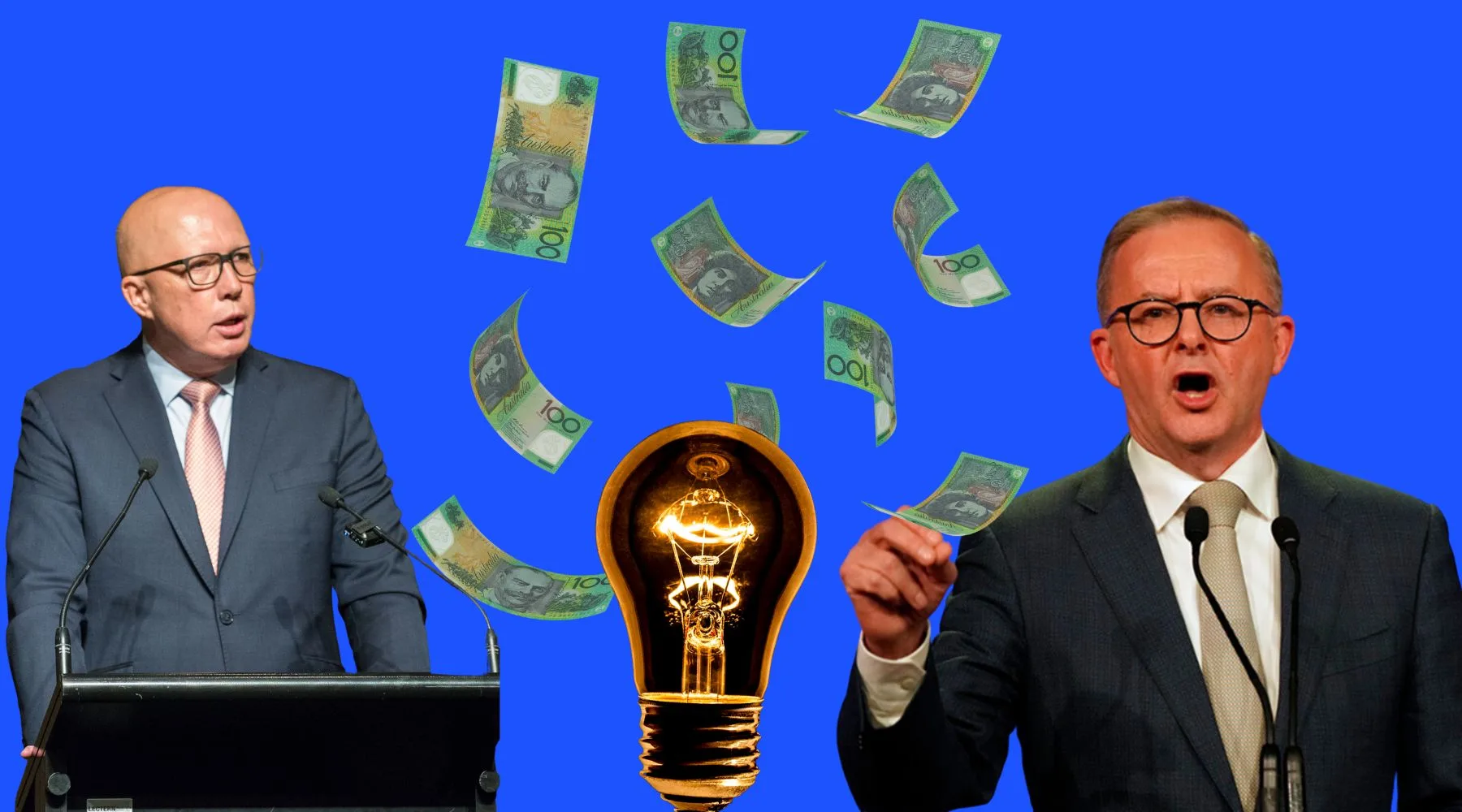Who has the best plan to slash your power bills? Election promises explained

As the 2025 election nears, Aussies are focused on rising living costs, including who's offering the biggest cut to power bills.
Energy policy isn't the sexiest topic on Earth, I get it.
But given it will affect your power bills, the jobs of the future, and what kind of energy we're using for decades, it's actually kind of a big deal.
In fact, our research shows that the cost of living is top of mind for 75% of Aussie voters in this federal election.
That includes groceries, rent and energy bills.
Luckily for you, I like nerding out on all things energy, so here's a rundown of what's what before you cast that crucial vote.
First up, what do Labor and the Coalition actually agree on?
Well, both are backing net zero by 2050. That's the big climate target.
Both are also extending the energy rebate to the end of the year.
That's an extra $150 going to every Aussie household and about a million small businesses paid in $75 quarterly instalments. After that, it's anybody's guess.
Okay, now let's talk about where the real difference lies.
What is the Coalition promising for power bill relief?
This election is shaping up to be a tug-of-war between nuclear and renewable energy.
Nuclear energy
The Coalition wants to build a whole new nuclear industry from scratch. According to its modelling, by 2050, we'd get:
- 38% of our power from nuclear,
- 54% from renewables,
- and the rest from storage and gas.
To do that, it would have to replace seven coal plants with nuclear reactors. The first few could be up and running in 10–12 years. But Australia's science agency, the CSIRO, says it's more like 15...at least.
And the price tag? Around $331 billion to build and operate a nuclear industry by 2050.
But here's where it gets contentious. The CSIRO and Australian Energy Market Operator have consistently said nuclear is significantly more expensive than renewables.
Some reports even suggest nearly double the cost. The Coalition rejects that, claiming Labor's plan will actually cost more because of all the extra transmission lines needed to connect renewables to the grid.
And here's the thing. While that nuclear future is being built, we'd still be relying on coal and gas, which are getting more expensive.
Coal plants are aging and unreliable. Gas is more stable but costly, mainly because so much of it is locked into export contracts.
Don't wait for energy prices to go up to start saving on your bills.
You will likely find a cheaper deal right now if you haven't compared energy plans in over 12 months.
Gas reservation scheme
So the Coalition has added another plank to its energy policy - a gas reservation scheme for the east coast market.
It'll help keep more gas in Australia, ease supply issues and bring prices down.
Its modelling shows this could cut household gas bills by 7% and electricity bills by 3%.
That's roughly $110 for the average household, but you might have to wait up to a year for any price reductions.
It's also pledged to approve the North West Shelf gas expansion within 30 days of being elected as part of its $1 billion spend on energy infrastructure.
Now, flip the coin - here's Labor's plan for power bill relief
Renewable energy
Labor's going all in on renewables as part of its election promise, targeting 82% renewable energy by 2030, plus a 43% emissions reduction on the way to net zero.
The strategy is to build a grid powered mostly by solar, wind and batteries.
It's committing to more than 4,000 km of high-voltage transmission lines to connect up clean energy projects and bring power across the country.
Home battery discounts
It's also offering a 30% discount on home batteries to help households store solar energy and cut down on peak-hour costs in the evening.
That's when power's usually most expensive.
Given batteries cost around $10,000 to $12,000, you're still going to have fork out about $8,000 upfront.
And yes, we've got to mention it. Labor went into the last election saying it would cut your power bill by $275.
That didn't happen.
To be fair, that figure came from modelling based on assumptions that didn't account for major global events like the war in Ukraine and surging energy prices worldwide.
So here's where we're at with 2025 election promises...
- Labor wants to supercharge renewables and modernise the grid.
- The Coalition wants to build a nuclear industry, fast-track gas, and boost reliability.
- Oh, and the Greens - along with some independents - are pushing for stronger climate goals and want to see an immediate stop to new coal and gas projects, plus an end to government funding for fossil fuels.
Both the Labor Party and the Coalition's plans come with big costs, both in dollars and in time.
Both claim to be more affordable in the long run.
And honestly? It's not clear-cut. Rising electricity costs are complex, and no one policy is going to fix it overnight.
Ask a question
